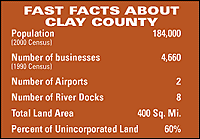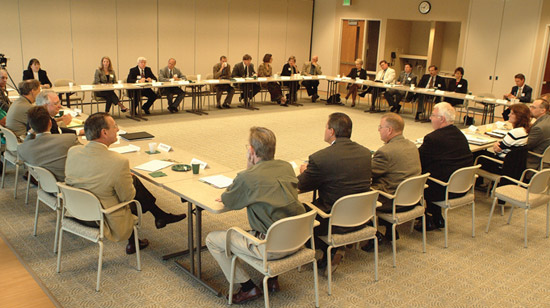Total package
When asked what was the county’s greatest asset, Jeff Samborski among others refused to discriminate among virtues and zeroed in instead on the phrase “total package.”
For Samborski, that package included “a sense of community, a place people like to call home, and a strong work ethic.”
Darren Hennen used the same phrase, but included even more variables in that package, including “education, aviation, affordability, and transportation.”Tom Atkins also thought the county was
best understood—and ideally marketed—as a “whole.” For Atkins this went beyond education and infrastructure and included fundamentals like water and electricity. Atkins noted that while other regions may be struggling to provide adequate supplies of either, “We have plenty of both.” “We have a huge blessing with the Missouri River,” added John Dillingham. “We have a water supply other cities envy.”
Mark Tanksley succinctly assessed the county’s virtues as “schools, work force, affordable housing, and recreational opportunities.” Jim Nelson cited two other indispensable assets as part of the whole—“availability of real estate, and proximity to Kansas City.” Todd Watson added the “affordability” of real estate and the proximity to Kansas City International Airport. For Tammy Henderson, it was “a great tradition, great location, great amenities, and great schools.” Bonnie Sue Cooper was particularly keen on location. “Whatever we need or want is here,” said Cooper. “It’s like a doorway to the world.”
Several participants cited the less tangible “quality of life” as the county’s great virtue. Jerry Brant saw “the more permanent nature of community” as a key part of that quality, what Mayor Bill Cross called the county’s “socio-economic stability.” Ashley Dillard traced the quality of the life to the area’s “small town feel,” but a small town with “all the amenities.” Sandy Butler agreed that the county, for all its urbanity, retained a “small town atmosphere.” Kim Wales could sense that quality through the reaction of the new prospects that come to the area. Like her, they tend to agree that Clay County “is a great place to be.”
Schools rule
Co-Chair Tom Cummings saw a close correlation “between the quality of schools and the quality of life.” He pointed out that of the ten Kansas City area school districts recognized with “distinction” by the state of Missouri, eight were north of the river—this despite the “inconvenience” of having schools within the county whose students range from urban to suburban to rural and also, as Bonnie Sue Cooper observed, from poor to middle class to wealthy. “We can be extremely proud of the opportunity we provide through the quality of schools,” said Cummings.
As good as the schools are, what is “unprecedented,” added Cummings, is the cooperation among the districts and other educational entities to help foster economic opportunity. John Dillingham was equally forceful when he declared this level of cooperation among schools “unheard of.” This high level cooperation has been formalized through the Northland Schools Alliance.
(Top Photo) NKC School Superintendent and Clay County ED co-chair Tom Cummings discusses the Northland’s strength between its quality schools and quality of life. Mike VanBuskirk and John Dillingham are shown to his right.
NKC Hospital exec. event co-chair Nettie Agnew reports the climate as an “exciting time” for the County. Jim Nelson and Darren Hennen are to her right.
Gladstone Mayor Bill Cross discusses the socio-economic stability in the area communities. He‘s accompanied by associates Scott Wigerson and Kirk Davis.

